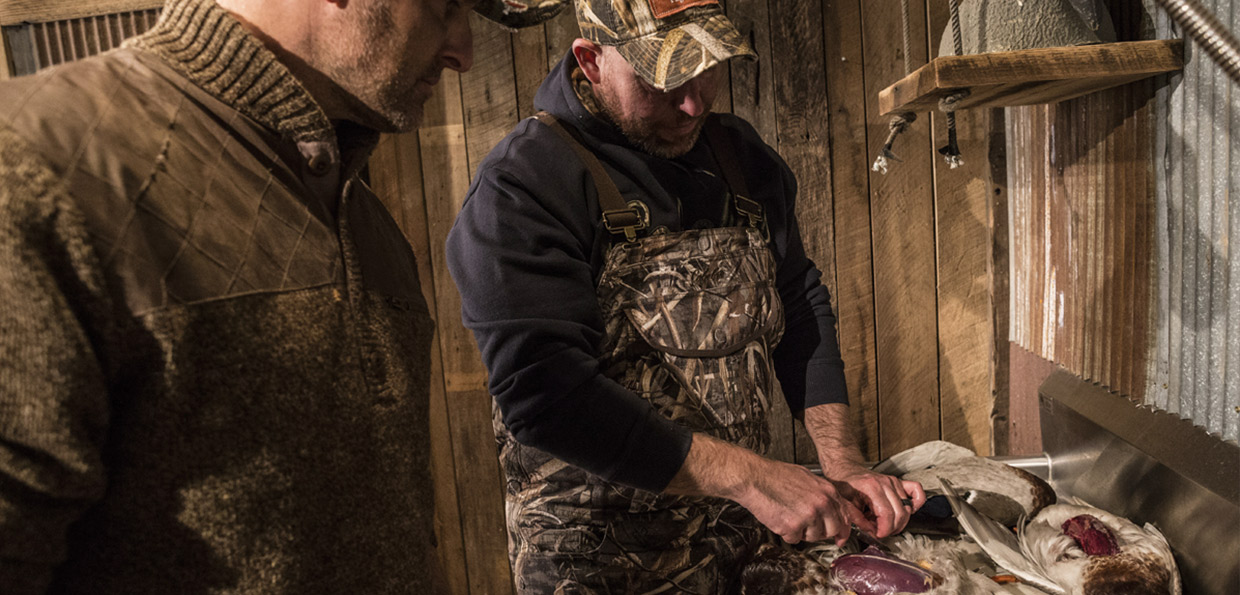Harvest

From Field to Table
Enjoy a delicious variety of culinary treats and reward your palate with recipes highlighting nature’s flavours. Savour the bounty of nature and experience the joy of the outdoors with great food.
Cook With Us
One of the reasons for waterfowl hunting’s enduring popularity amongst wild game hunters is the deliciousness of the bounty. Duck and goose provide incredibly tender meat perfect for gourmet meals or holiday gatherings.
Processing Tips
1. Plucking
The first step in the process is to remove the feathers, which will be slightly more difficult than plucking a chicken, since there are more down and feathers. You can dry pluck feathers, but this can be laborious. Your best bet is to soak the bird in 150℉ water for three to five minutes. You may want to add a little splash of detergent to cut down any oil in order to reach the skin. After the soak, the feathers should be fairly easy to remove.
2. Processing
Use your shears to clip off the feet, chop off the head and the second joint of the wing. Also using your shears, remove the tail, keeping the gizzard in mind so as not to damage it. Start a tap of cold water and, reaching into the cavity, pull out the gizzard, which should pull the intestines out. Then, you should be able to find the heart and liver to remove with your hands. If there is difficult connective tissue, trim the organs loose. Give the carcass a rinse and pat dry with paper towels. Check your regulations for transporting waterfowl after processing. One wing usually needs to be attached to the carcass for easier identification by waterfowl enforcement officers.

3. Storing the harvest
After your bird has been processed, place it in a clean, sealable plastic container and keep in the refrigerator for up to a week before putting it in the freezer to continue the aging process. The longer you keep the bird in the fridge, the drier it becomes, so use your judgement. Once you’re ready, vacuum seal and store in the freezer.
.
Many hunters like to utilize as much of the bird as possible, which is great if you can! There are plenty of scrumptious things to do with hearts, livers, gizzards, legs (remove the tendons!), and, in particular, the tails of puddle ducks, which have a high fat content. As you’re processing your meat, take care not to throw out the parts you plan to use and store properly.